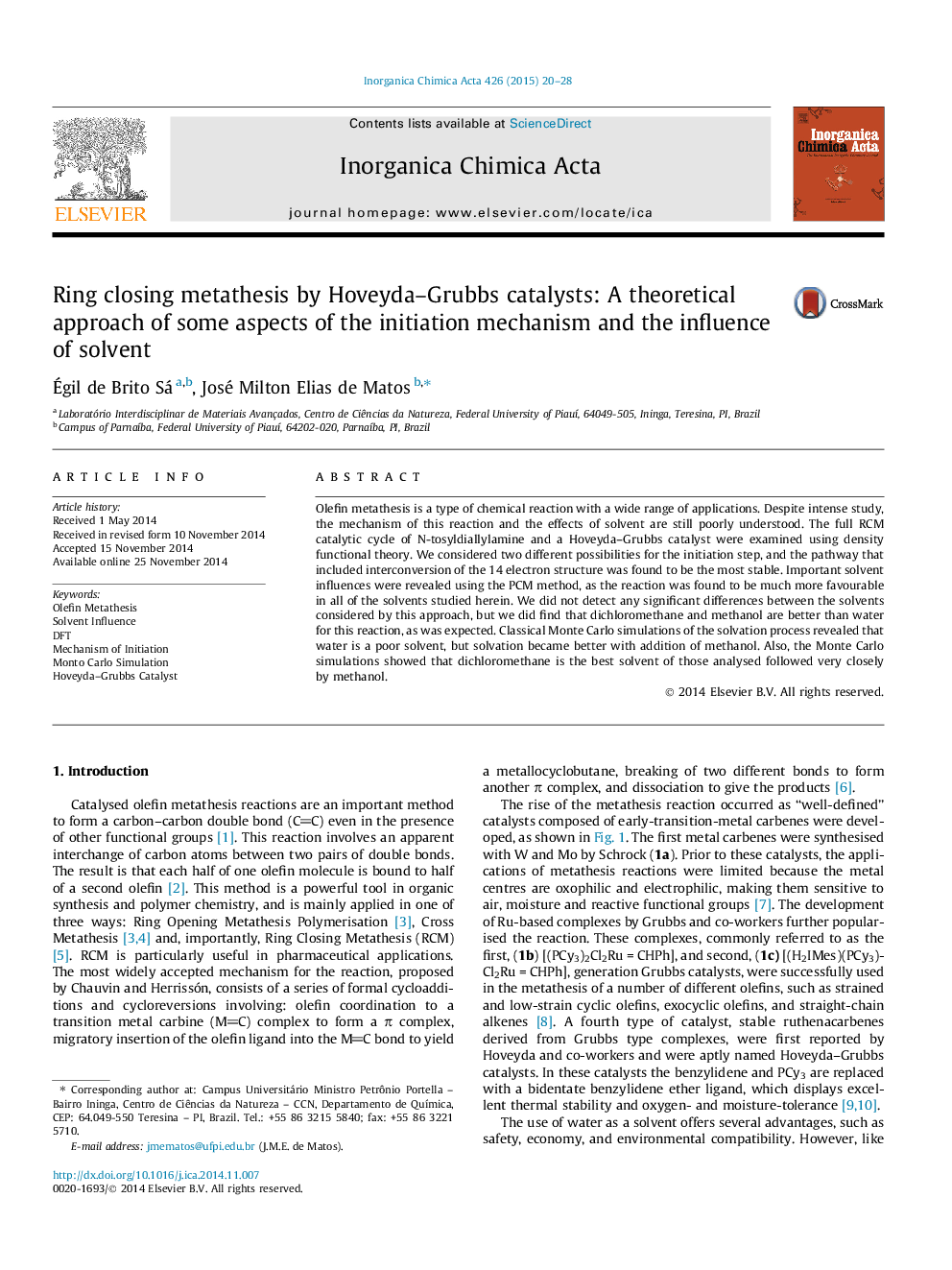| کد مقاله | کد نشریه | سال انتشار | مقاله انگلیسی | نسخه تمام متن |
|---|---|---|---|---|
| 1306723 | 1499163 | 2015 | 9 صفحه PDF | دانلود رایگان |

• Gas-phase mechanism of RCM using a Hoveyda–Grubbs complex as catalyst.
• Insights on the activation/initiation step of Hoveyda–Grubbs catalysts.
• Study of influence of different solvents on the catalytic cycle using PCM.
• Solvent influence on catalyst and olefin using Monte Carlo classical simulation.
Olefin metathesis is a type of chemical reaction with a wide range of applications. Despite intense study, the mechanism of this reaction and the effects of solvent are still poorly understood. The full RCM catalytic cycle of N-tosyldiallylamine and a Hoveyda–Grubbs catalyst were examined using density functional theory. We considered two different possibilities for the initiation step, and the pathway that included interconversion of the 14 electron structure was found to be the most stable. Important solvent influences were revealed using the PCM method, as the reaction was found to be much more favourable in all of the solvents studied herein. We did not detect any significant differences between the solvents considered by this approach, but we did find that dichloromethane and methanol are better than water for this reaction, as was expected. Classical Monte Carlo simulations of the solvation process revealed that water is a poor solvent, but solvation became better with addition of methanol. Also, the Monte Carlo simulations showed that dichloromethane is the best solvent of those analysed followed very closely by methanol.
This is an important part of mechanism of initiation of ring closing metathesis (RCM) using Hoveyda–Grubbs type catalysts. This step may happen in two different ways: with the uncoordinated ligand Hoveyda turning to front of catalyst plane, in one of ways, or behind the catalyst plane in the other way. The second possibility is more favoured.Figure optionsDownload as PowerPoint slide
Journal: Inorganica Chimica Acta - Volume 426, 24 February 2015, Pages 20–28